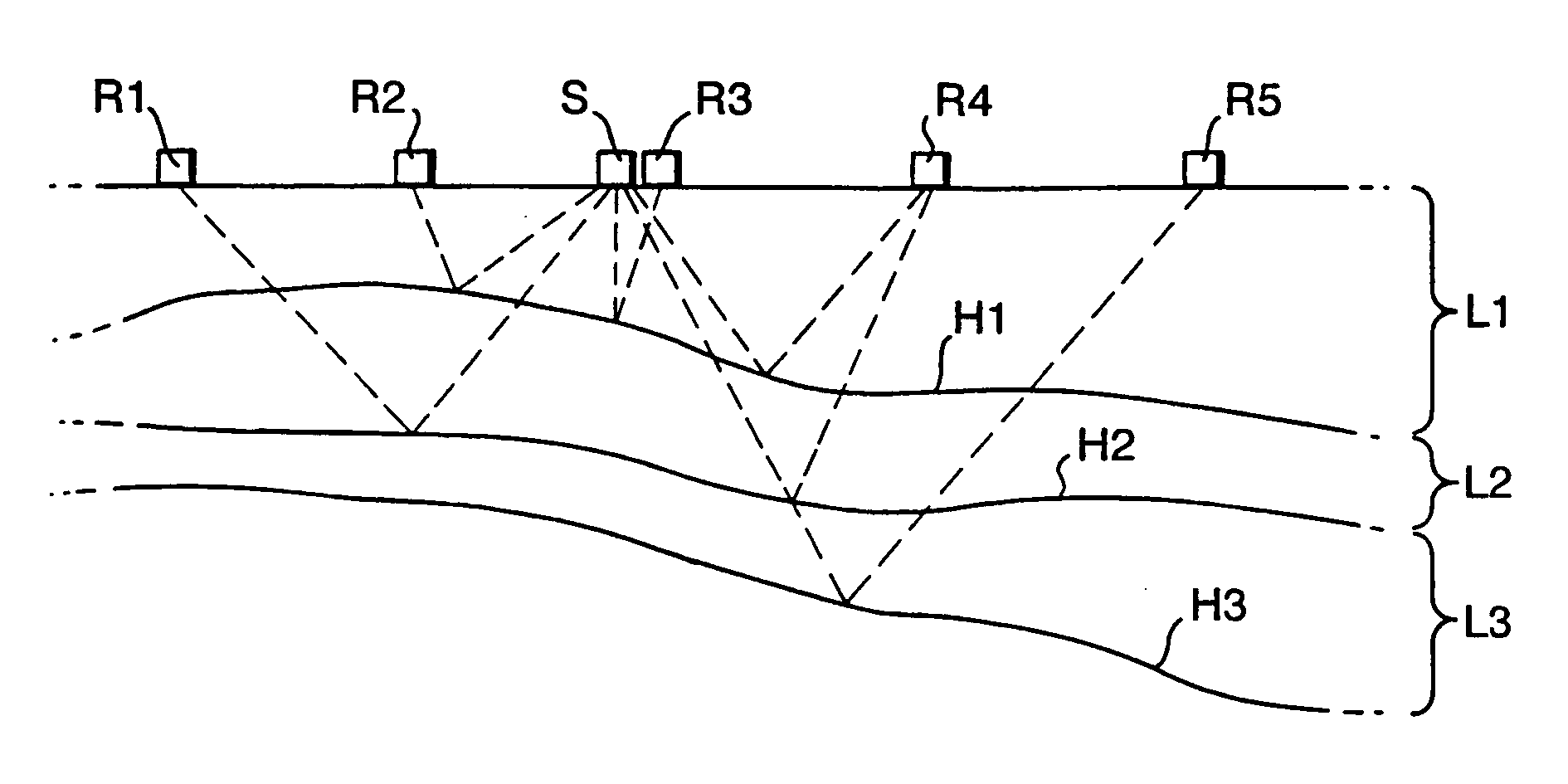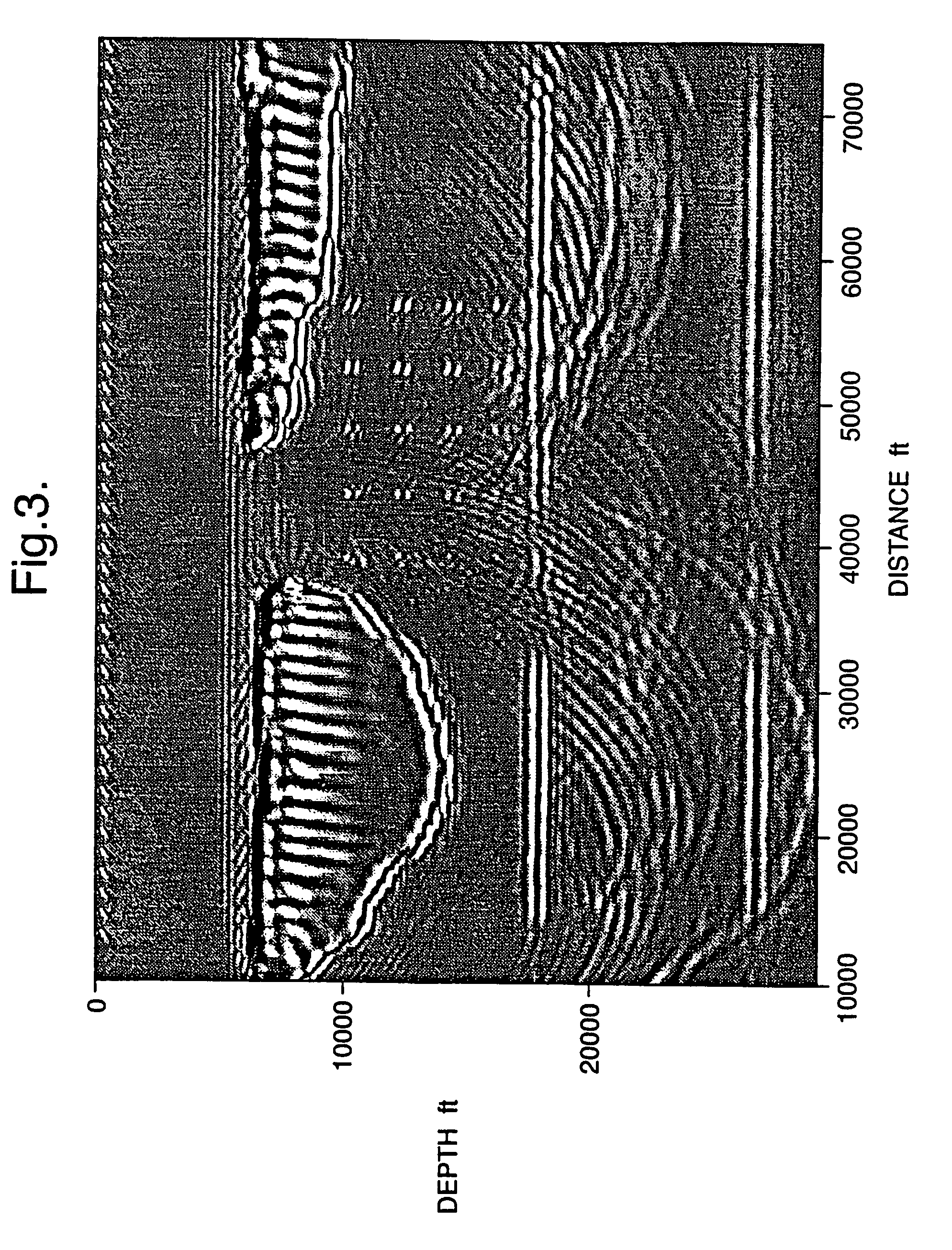Method of processing seismic data
- Summary
- Abstract
- Description
- Claims
- Application Information
AI Technical Summary
Benefits of technology
Problems solved by technology
Method used
Image
Examples
Embodiment Construction
[0019]In FIG. 1, a seismic source S, for example an explosive, is located on the surface of the earth together with a plurality of geophones R1 to R5. Typically, there will be hundreds of geophones arranged in a two dimensional or a three dimensional array over the surface of the earth. For simplicity, only five geophones R1 to R5 are shown. Seismic signal paths (“ray paths”) are shown in broken lines between the source S and the geophones R1 to R5 via subsurface layers L1, L2, and L3. The ray paths are shown reflecting from a number of horizons H1, H2, and H3. Only some of the ray paths are shown for clarity.
[0020]Because the seismic signals will travel at different speeds in the layers (typically the speed of propagation will increase with an increase in depth) it is not straightforward to locate the horizons H1, H2, and H3. The data from each horizon is generally separated and a seismic energy propagation model (i.e. an estimate of the subsurface acoustic velocities) of the subsu...
PUM
 Login to View More
Login to View More Abstract
Description
Claims
Application Information
 Login to View More
Login to View More - R&D
- Intellectual Property
- Life Sciences
- Materials
- Tech Scout
- Unparalleled Data Quality
- Higher Quality Content
- 60% Fewer Hallucinations
Browse by: Latest US Patents, China's latest patents, Technical Efficacy Thesaurus, Application Domain, Technology Topic, Popular Technical Reports.
© 2025 PatSnap. All rights reserved.Legal|Privacy policy|Modern Slavery Act Transparency Statement|Sitemap|About US| Contact US: help@patsnap.com



